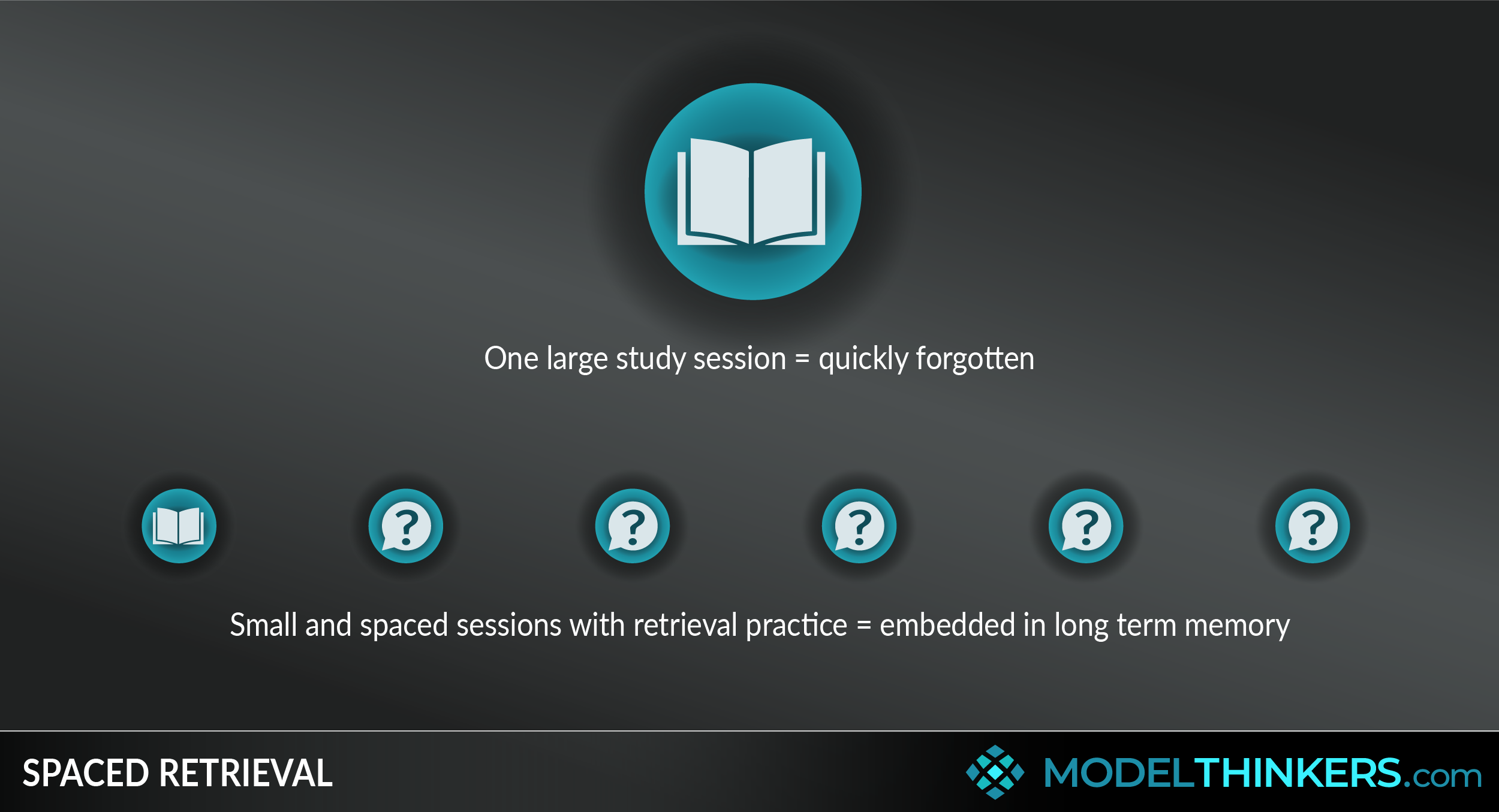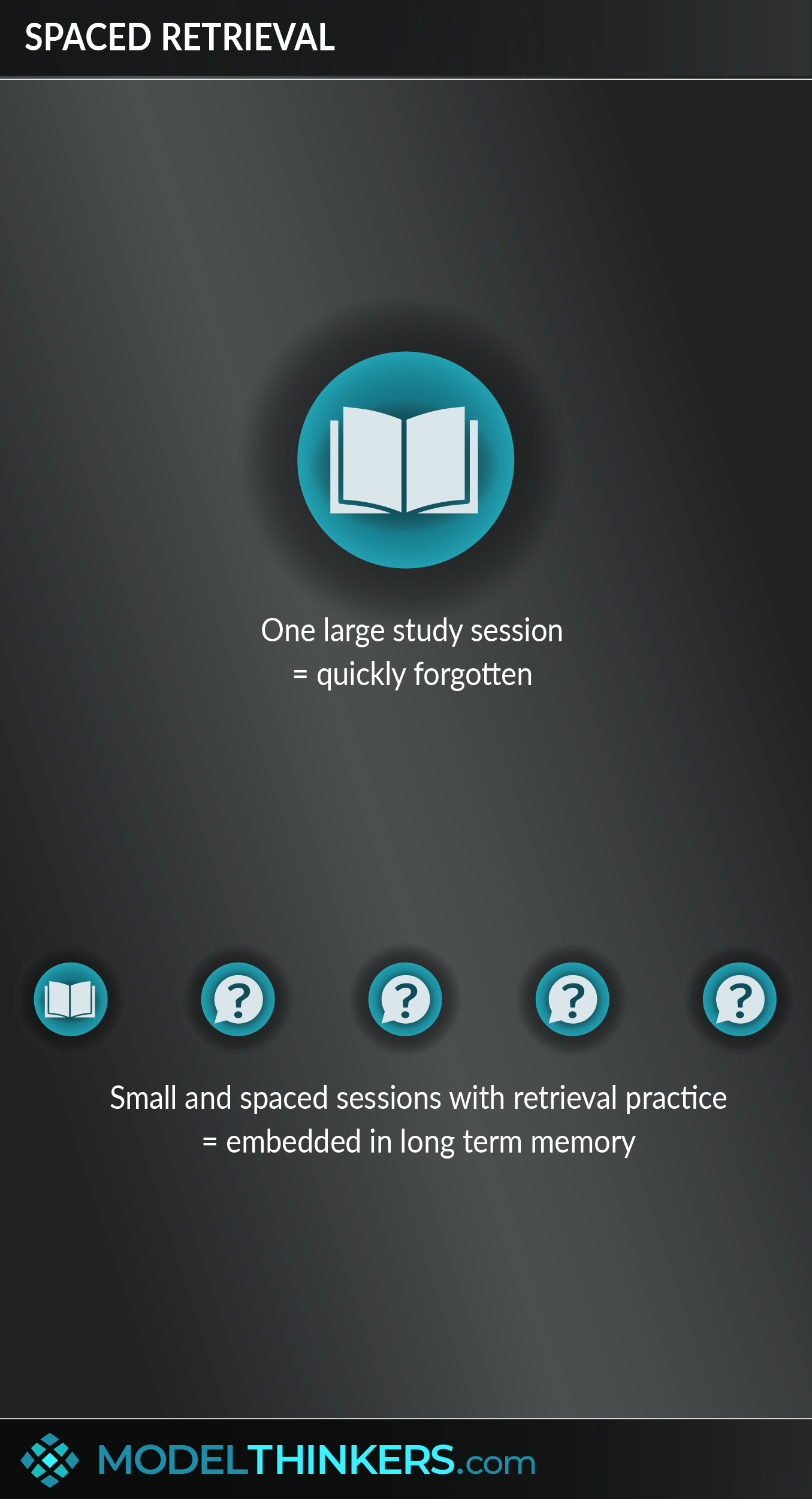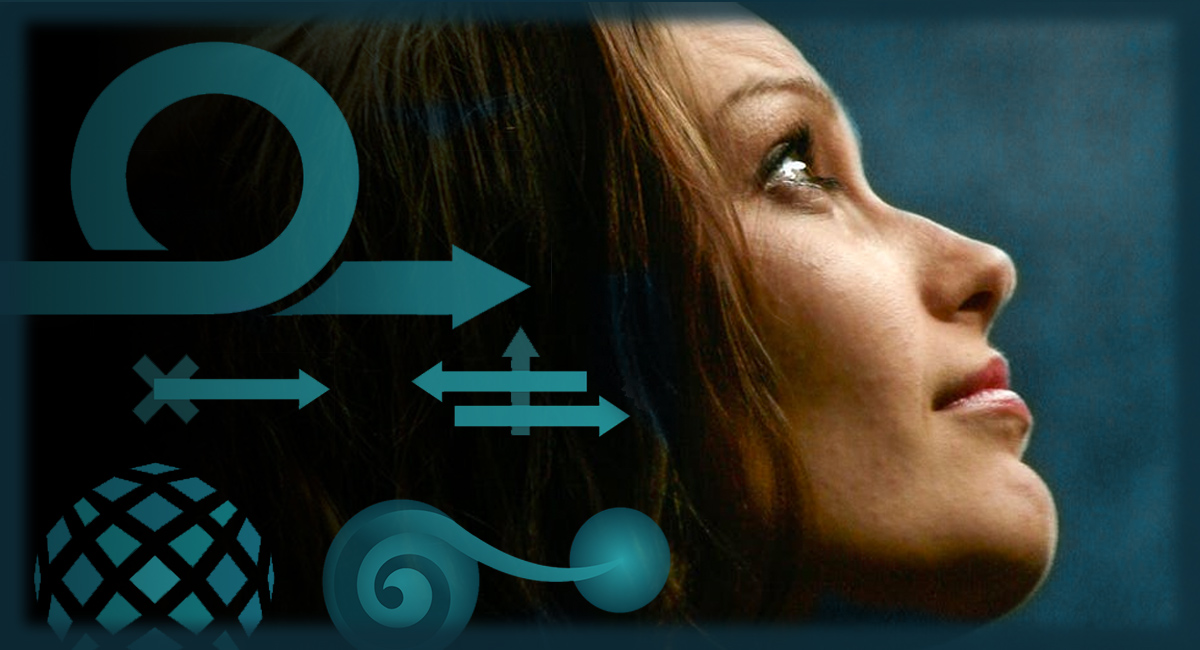

 0 saved
0 saved
 23.7K views
23.7K views








Cast your mind way back to that big exam in your final year of school. Remember how you stayed up all night before the exam to 'cram' the whole textbook? You passed the exam, only to forget everything two days later.
Well, this model is the opposite of that.
Spaced Retrieval a powerful learning hack involving breaking up your available learning time into short, spaced sessions where you actively retrieve the information.
THE TWO MODELS BEHIND THIS ONE.
Spaced Retrieval combines two of the most evidence-based learning techniques available:
- Spaced Practice: This involves spacing out available learning time in small sessions over a long time frame rather than learning in fewer large blocks.
- Retrieval Practice: This involves focusing on regularly testing or retrieving information rather than simply reviewing and re-reading content. Reviewing might lead to a fallacy known as Illusions of Competence, where you mistake your ability to recognise content for your ability to recall, understand and use it.
Spaced Retrieval combines these approaches through short and distributed periods where you focus on retrieving your learning.
LEARN MORE BY REMEMBERING AS YOU'RE FORGETTING.
This model is built on a mountain of evidence-based research that can be traced back to Ebbinghaus, see the Origins and Resources section below for more. However, it's particularly worth noting the work of the Bjorks, the husband and wife team working out of the University of California. They identified the concept of Desirable Difficulties in learning which is essentially obstacles that slow down learning and help to better embed knowledge into long-term memory in the process.
One practical technique resulting from this is to force yourself to retrieve information as you're forgetting it to embed it more effectively. That's counterintuitive, as you'll struggle more and likely think that you're not learning. By contrast, simply recalling information that is fresh to mind, while likely leaving you confident, will not embed the information into long-term memory as effectively.
RETRIEVAL COMES IN MANY FORMS.
You might think of retrieval as quizzing or testing yourself, and you'd be right, but retrieval can go much further and be more varied in the way it looks. For example, it might also involve explaining it to someone, debating the topic, or better still, finding an opportunity to apply your learning — the key is that it involves spaced and active retrieval moments, rather than less frequent and passive recognition of the content.
IN YOUR LATTICEWORK.
If you're not sure where to start, a simple application of this model is captured in the Leitner System, a flashcard system that drives countless learning app algorithms, including the way we organise our Learn section in ModelThinkers.
Before jumping in with this model, consider whether your challenge is knowledge-based or skills-based — if it's about skill, you might also want to combine Deliberate Practice with Spaced Retrieval.
Finally, another learning-related mental model that you might want to consider, that involves challenging rather than just reinforcing mental models, is Double Loop Learning.




- Break large study blocks into consistent smaller sessions over time.
It’s true that cramming might help you pass that exam, but you’ll forget most of what you learnt soon afterwards. For long term memory results, break up your study sessions and space them over time, providing you enough time to start to forget before you study again. In that sense, spacing over days or even weeks is generally more effective than spacing over a day.
- Creatively retrieve content, don’t just recognise.
Don’t just re-read content, force yourself to actively retrieve it by testing yourself. Beyond that, try explaining it to someone, blog about it to a particular audience, or apply the concept to a real problem and actually put it into action.
- Use the Cornell Notes system.
Cornell Notes is a method of note-taking that supports Spaced Retrieval. Simply draw a column down the page, separating it into around 70:30. In the 70, capture your traditional notes and ideas. But in the 30 column, write down keywords and, importantly, questions. When reviewing your notes, focus on the questions and use it to retrieve your learning, before referring to your notes. You can apply this on the side of book pages by capturing questions that you can scan through rather than just summary notes.
- Use the Leitner System.
Go old school with flashcards using the Leitner System. Use/ build apps that leverage a Leitner inspired algorithm to help embed learning. View the Leitner system for more information.
- Use the ModelThinkers Learn menu to embed mental models.
The ModelThinkers Learn menu leverages the Leitner system and spaced retrieval. Once you’re a member you’ll be able to add models to your personal latticework, then you can use the learn section to set reminders for a regular quick quiz. Each quiz only takes a few minutes and challenges you to retrieve models, as you’re forgetting them, for better long term learning.
With many repeatable experiments in this space, there seem to be few limitations to the theory. Perhaps the only challenges lie in developing the exact science behind the length of the spacing and nature of the retrieval over any substantive criticism of the general approach. That is, there remains some debate over how long the spacing should be to maximise learning — though this continues to be an area of investigation.
Interrupting the forgetting curve.
Spaced Retrieval aims to interrupt Ebbinghaus’ famed forgetting curve. It allows for initial uptake of information, then repeatedly interrupting our tendency to forget, by forcing recall at spaced intervals. This approach is outlined by the Bjorks in their UCLA Learning and Forgetting lab here.
Repeated academic experiments.
This 2017 academic review by Jeffrey Karpicke outlines the research history and findings that support spaced retrieval. As we’ve commented it is one of the most evidence-based practices in the learning space.
A personal case study with Helen Blunden.
I'll admit our bias upfront. Here at ModelThinkers, we see Helen Blunden as a wonderful example of a curious, continuous learner. It's kind of what defines her. That said, we enjoyed Helen's description of using spaced retrieval so much — not to mention her generous call out to ModelThinkers — we couldn't resist including her post as an example here. Find out more about Helen's spaced retrieval journey, including a look at common spaced retrieval/ flashcard apps.
Spaced retrieval is a highly evidence based learning technique that is practically applied via the Leitner System and can be applied to skills by combining it with deliberate practice. Importantly, it’s the method we use in our learn section of ModelThinkers.
Use the following examples of connected and complementary models to weave spaced retrieval into your broader latticework of mental models. Alternatively, discover your own connections by exploring the category list above.
Connected models:
- Leitner System: a practical application of spaced retrieval that can be applied to flash cards or app developments, and is what we’ve used in the ModelThinkers.
- Deliberate Practice: an important addition to integrating complex skills with spacing and applying.
Complementary models:
- Latticework of Mental Models: spaced retrieval is how you’ll remember the models you want to use in your life — again, explore the learn section of ModelThinkers.
- Double Loop Learning: which goes deeper in challenging mental models.
Our understanding of memory and learning in relation to spaced retrieval can be traced back to Hermann Ebbinghaus’ work on the forgetting curve.
Spaced repetition as a learning and memory technique was first explored by Bjork and others in 1978. Over the last few decades, it has been the subject of many experiments and papers that have demonstrated the consistent impact of the approach.
For evidence of the positive impact of testing on learning see this 2006 study by Roediger and Karpicke. For Bjork's substantive overview of this approach view his UCLA Learning and Forgetting lab here. For a simple overview of this and other memory, hacks view the Learn2Learn crash course of learning agility here. For a more student
 My Notes
My Notes
Oops, That’s Members’ Only!
Fortunately, it only costs US$5/month to Join ModelThinkers and access everything so that you can rapidly discover, learn, and apply the world’s most powerful ideas.
ModelThinkers membership at a glance:






“Yeah, we hate pop ups too. But we wanted to let you know that, with ModelThinkers, we’re making it easier for you to adapt, innovate and create value. We hope you’ll join us and the growing community of ModelThinkers today.”





















































































